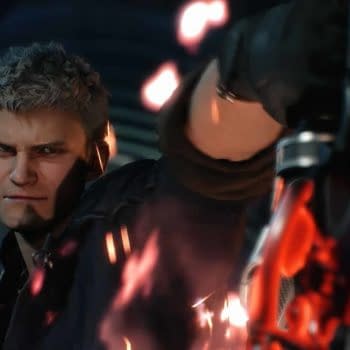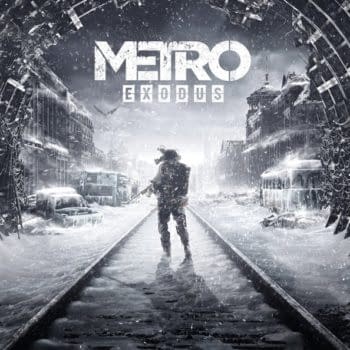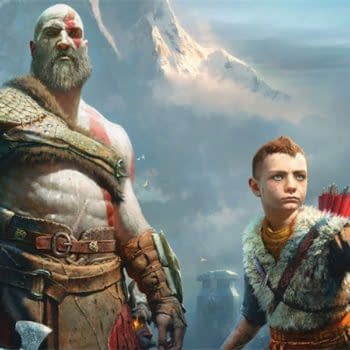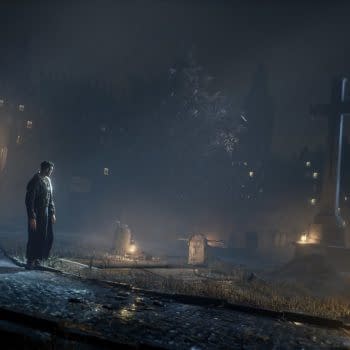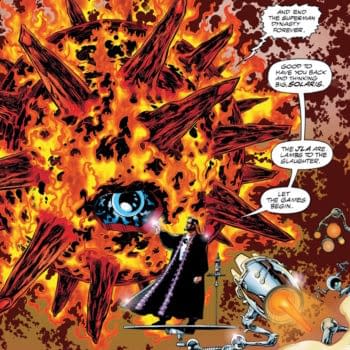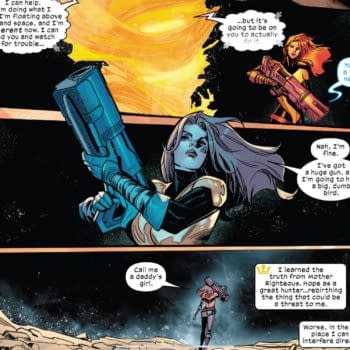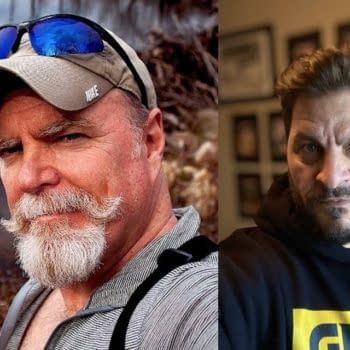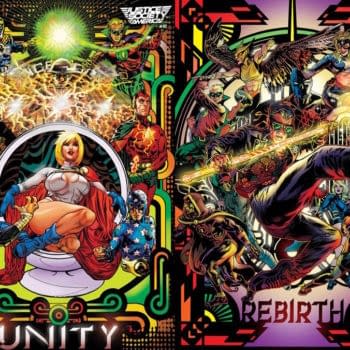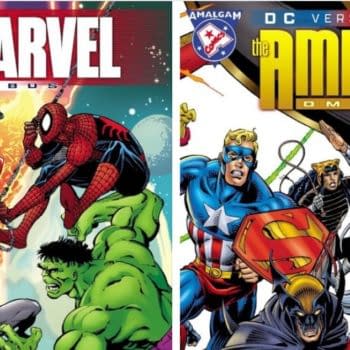Posted in: Comics | Tagged: Comics, entertainment, kathleen kralowec, the lion and the roc
Kathleen Kralowec On Her New Fantasy Comic The Lion And The Roc
By Nikolai Fomich
Long ago magic was real, and the monsters who wielded it clashed with humankind. Men and women soon came to forsake their gods for science, slaying the world's magical beasts and forcing the survivors to find new ways to exist. How they've remained in our world and why are the subjects of comic book creator Kathleen Kralowec's brand new series, The Lion and the Roc. I spoke with Kathleen about the online series and its origins.
Nikolai Fomich: Kathleen, what is The Lion and the Roc?
Kathleen Kralowec: The Lion and the Roc is the story of two mythic monsters who are reincarnated in human form, and the super-human love they share. One is the Roc, or Rukh, of ancient Persian lore, called Parable in this story. The other is a monster I imagined called the Primordial Lion, who existed before written language and terrorized early humans. Her name is now Gustovelt. They will encounter many other monsters reborn as humans in their travels, but they are the only ones who remember that they were monsters, and have retained their connection to magic. Through it all, Gustovelt has a devotion to Parable that goes beyond what humans or even most monsters can understand – a love that is perhaps specific to her alone, and it wields a destructive force that the world hasn't seen in thousands of years.
NF: What's the secret origin of this project?
KK: I was quite young when I started thinking about these characters. For many years, I carried this story around in the back of my mind, like a deep dark secret, through college and travels and grad school and a career in the game industry. I didn't know exactly how I was going to make it happen, but I started going to comics events and learning about the industry and talking to people. I found out, to my surprise, that there are lots of people out there with deep dark secrets like this – carrying around these massive stories that they're not quite sure what to do with. Some experts have advised that such long-term pet projects should be dumped out in exchange for newer ideas. I can see the logic in that, and I think sometimes that makes the most sense, but I decided not to follow that advice. There was a certain spark in this project that made me truly excited, and there are things in it that I just really wanted to share with the world.

KK: I actually first drew eight pages of this comic entirely in Manga Studio, and I expected to draw the entire book digitally. I took those eight pages to a lot of critique sessions, and got a ton of technical feedback. By the end of that feedback, it was clear I had a lot of areas of my art that I needed to improve, but it was also clear that Manga Studio, while [being] a brilliant tool for inking and getting really professional results, was partly keeping my work from looking its best, because I wasn't that great with Manga Studio yet. I was making a lot of mistakes with consistency of line-widths, and I [didn't] have as much control overall.
I basically found myself thinking [that], for this project, I want to be really close to the characters. Involving myself physically in the "performance" (in comics parlance, the performance becomes the gestures and poses of the characters on the page) was an experience I wanted to get out of this project. I decided that the way I was going to access all those experiences was going to come with me physically addressing the page, with pencils and pens and paints and more pencils and who knows what else. I was really impressed by Bill Sienkiewicz's multi-media renditions of Elektra, and I had started doing digital coloring experiments along those lines for my webcomic KerBop.
A little side-note: I was doing a comic called KerBop when I started drawing The Lion and the Roc, and it was my agony with figuring out colors on KerBop that influenced a lot of my choices for Lion and Roc. I had intended to draw KerBop in traditional media and then color in digital media, but I found the process of coloring digitally really aggravating. I have a habit of using every color of the rainbow all the time because they're all available, I really hate flatting, and it takes me forever. The process was time-consuming, the experience was not interesting, and so I put it off and the results were terrible. I had taken a hiatus on KerBop to figure out what I was going to do about the colors, when I started experimenting with coloring with Prisma pens, and found that I not only enjoyed them immensely more (which meant I actually got around to doing it, which meant it actually got done) but also the results were good. This led me to believe that coloring in traditional media could work – I was also encouraged by seeing the work of artists like Farel Dalrymple and Marian Churchland, and I've run into other artists who opt for traditional media for coloring. So I decided to give it a whirl with The Lion and the Roc. I must say it feels good to actually make use of all the art supplies I tend to accumulate! I don't promise full, traditional coloring for every issue – I am going to use digital lettering from issue two onward for example. I do intend to continue experimenting and going in whatever direction gets me the experiences and effects I'm interested in.
NF: In this world you've created, science has usurped magic as the dominant power in the world, but mythic beasts are returning to earth, reincarnated as human beings. How does their double perspective, having experienced life as magical monsters and now living in human forms, influence their relationship with magic and science?
KK: In the world of this story, mythical beasts were a true form of existence that went extinct. They occupied a space somewhere between ordinary animals, whose bodies are restricted by physical laws, and spirit-beings, whose bodies are not bound by physical laws and who are free to access and use certain supernatural powers. Mythic beasts, in the history of this world, were dangerous to human beings because they were a part of nature that humankind could not control: they were sometimes sentient, but refused to be civilized, and they had definite powers, but they refused to use them for human interests. The extinction of such monsters made way for humankind to dominate the planet exclusively; however it also meant that humanity lost many of the reminders that the spirit realm had put in place. For the purpose of this book, spirits are drawn from a fabric or fiber of energy, attracted by the force of thinking, conscious beings, and molded into forms by those beings' desires and fears. Some monsters were terrifying, and some were benign, but they were all the result of something humankind needed, and subconsciously asked for. Some beasts served to give hope to humankind, others to guard and reveal secrets, others to pose threats that would motivate humans to band together in spite of differences, and others served to remind humans that we are not the only conscious, dangerous or powerful beings in the universe. Every mythic being had a very important role to play, and each of them carries that role deep within them, into their reincarnated selves.
Now that humankind is on the verge of making science and magic one unified practice, the universe has responded by resurfacing these guides [mythical beasts], as human beings. The human form is completely alien to them, and many of them have what feels like psychological issues to overcome. Like all people, they strive to fit in to society as they're growing up, but during their development they become aware of a particular role they play, with regards to humankind at large, and it sometimes terrifies them. Some spend a great deal of energy denying these suspicions, but they can never completely forget. One's first lifetime as a human being isn't easy – one is faced with so many new restrictions, and so many social pressures. But they all feel strangely enthralled to learn that they live in an age when science and magic are being conjoined, as though despite all the troubles and turmoil, they endure. They were born in the right place and time after all, and the world will turn out to have a place for them.
Kathleen Kralowec is a New York-based artist, writer, Photoshop teacher, and animator. Her works include KerBop the Angel, Electricity is Her Element, The Inner Mask Oracle, and The Lion and the Roc. Visit her webpage.
Nikolai Fomich is a Philadelphia-based writer, journalist, and scholar. Follow him on Twitter @brokenquiver.









